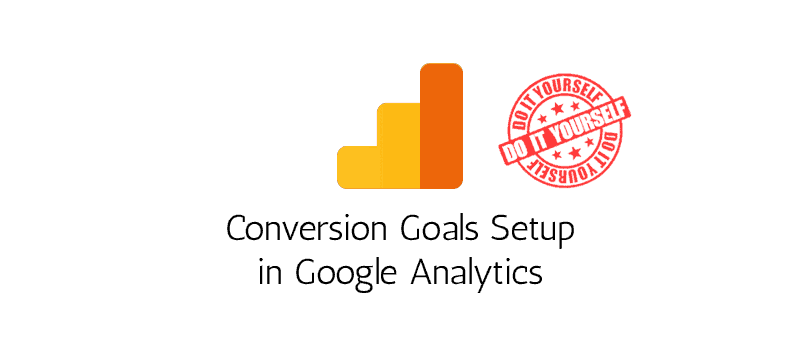What Data Is Google Analytics Goals Unable to Track: A Total Overview
What Data Is Google Analytics Goals Unable to Track: A Total Overview
Blog Article
Discover the Limitations of Google Analytics Goals: Revealing the Information Kind That Remain Untrackable
As services significantly depend on data-driven decision-making, recognizing the limitations of tools like Google Analytics ends up being paramount. While Google Analytics Goals offer beneficial insights into customer interactions, there exist data types that elude monitoring, presenting challenges to a thorough understanding of user habits.
Insufficient Customer Journey Tracking
Insufficient customer journey tracking within Google Analytics can prevent the capability to properly examine individual habits. When the user trip is not completely tracked, there are voids in the data that avoid a comprehensive understanding of just how individuals communicate with a site. This absence of insight can result in missed chances for optimization and improvements to the user experience.
One common issue with incomplete customer trip monitoring is the lack of ability to see the complete course that individuals take previously completing a goal or leaving the site. Without this information, it is testing to determine where customers might be running into barriers or rubbing points that prevent them from converting. Additionally, insufficient tracking can cover the influence of specific advertising efforts or internet site adjustments on individual behavior.
To resolve this constraint, it is crucial to establish proper tracking mechanisms within Google Analytics to capture the entire individual journey. This may involve establishing event tracking, goal funnels, or making use of devices like Google Tag Manager to make certain that no crucial communications go unrecorded. By getting a detailed sight of the individual trip, web site owners can make even more educated choices to boost individual engagement and drive conversions.
Acknowledgment Obstacles
Browsing through attribution obstacles in Google Analytics requires a detailed understanding of exactly how various touchpoints add to the overall conversion process. Attribution difficulties arise from the intricacy of modern-day customer trips, where users engage with multiple channels before transforming.
One usual acknowledgment difficulty is the difficulty in attributing conversions to the proper resource, particularly in cases where customers connect with several channels prior to transforming. Furthermore, cross-device tracking postures one more attribution difficulty, as individuals usually switch over in between gadgets during their journey, making it challenging to track their interactions perfectly.
Offline Conversions
Provided the difficulties related to attributing conversions precisely in online networks, the dimension of offline conversions offers a considerable opportunity for online marketers seeking a more comprehensive understanding of their clients' journey. Offline conversions refer to actions that customers take in the physical world, such as making purchases in brick-and-mortar shops or over the phone, participating in occasions, or engaging with printed products - what data is google analytics goals unable to track. These conversions are important for businesses that operate both online and offline, as they provide beneficial insights right into the effectiveness of marketing projects throughout different touchpoints
Tracking offline conversions typically postured a considerable obstacle for marketing professionals, as it was challenging to link these activities back to particular on the internet communications precisely. With advancements in technology, such as the integration of CRM systems, one-of-a-kind identifiers, and promo code codes, companies can now link the void in between online and offline data to gain a much more holistic sight of client habits. By efficiently gauging offline conversions, marketing experts can maximize their techniques, assign resources more efficiently, and inevitably boost the general client experience.
Cross-Device Monitoring
Cross-device tracking plays an essential duty in comprehending the interconnected nature of customers' electronic communications across numerous gadgets. In today's omnichannel world, where users effortlessly switch between smart devices, tablet computers, and desktop computers, tracking their actions across these gadgets is necessary for marketing professionals to gain a detailed sight of their customer journey.

Moreover, personal privacy issues and regulations such as GDPR and CCPA have better challenging cross-device monitoring. With users demanding more control over their data and enhanced limitations on monitoring innovations, marketing professionals have to discover privacy-compliant and cutting-edge ways to connect user interactions across devices.
Dynamic Content Engagement
Understanding user engagement with vibrant web content is crucial content in maximizing electronic advertising and marketing methods for improved audience interaction. Dynamic web content describes internet site elements that change based on individual actions, choices, or other variables, offering an individualized experience. Tracking individual interactions with vibrant web content presents difficulties for standard analytics devices like Google Analytics.
While Google Analytics can track standard communications like clicks and page sights, it might struggle to record more nuanced engagements within vibrant material. what data is google analytics goals unable to track. Metrics such as time invested on details vibrant elements, float activities, or communications within pop-ups are commonly not easily quantifiable utilizing standard monitoring methods. This constraint impedes marketing experts' capability to fully realize exactly how users are involving with dynamic material and customize their techniques as necessary

Verdict
To conclude, Google Analytics objectives have constraints in tracking insufficient customer trips, attributing conversions accurately, capturing offline conversions, tracking cross-device interactions, and determining vibrant material interaction. These restraints highlight the importance of exploring extra tracking techniques and tools to get an extra comprehensive understanding of user behavior and conversions past what Google Analytics can offer.
While Google Analytics Goals offer beneficial insights into customer communications, there exist information kinds that thwart monitoring, posturing obstacles to a comprehensive understanding of user actions.Insufficient customer trip tracking within Google Analytics can hinder the ability to accurately evaluate individual behavior. When the user trip is not totally tracked, there are spaces in the information that avoid a comprehensive understanding of how users connect with a website.One usual concern with insufficient user journey monitoring is the lack of ability to see the complete course that customers take before completing a goal or leaving the site. By gaining a thorough view of the individual journey, website owners can make even more educated choices to improve user involvement and drive conversions.
Report this page